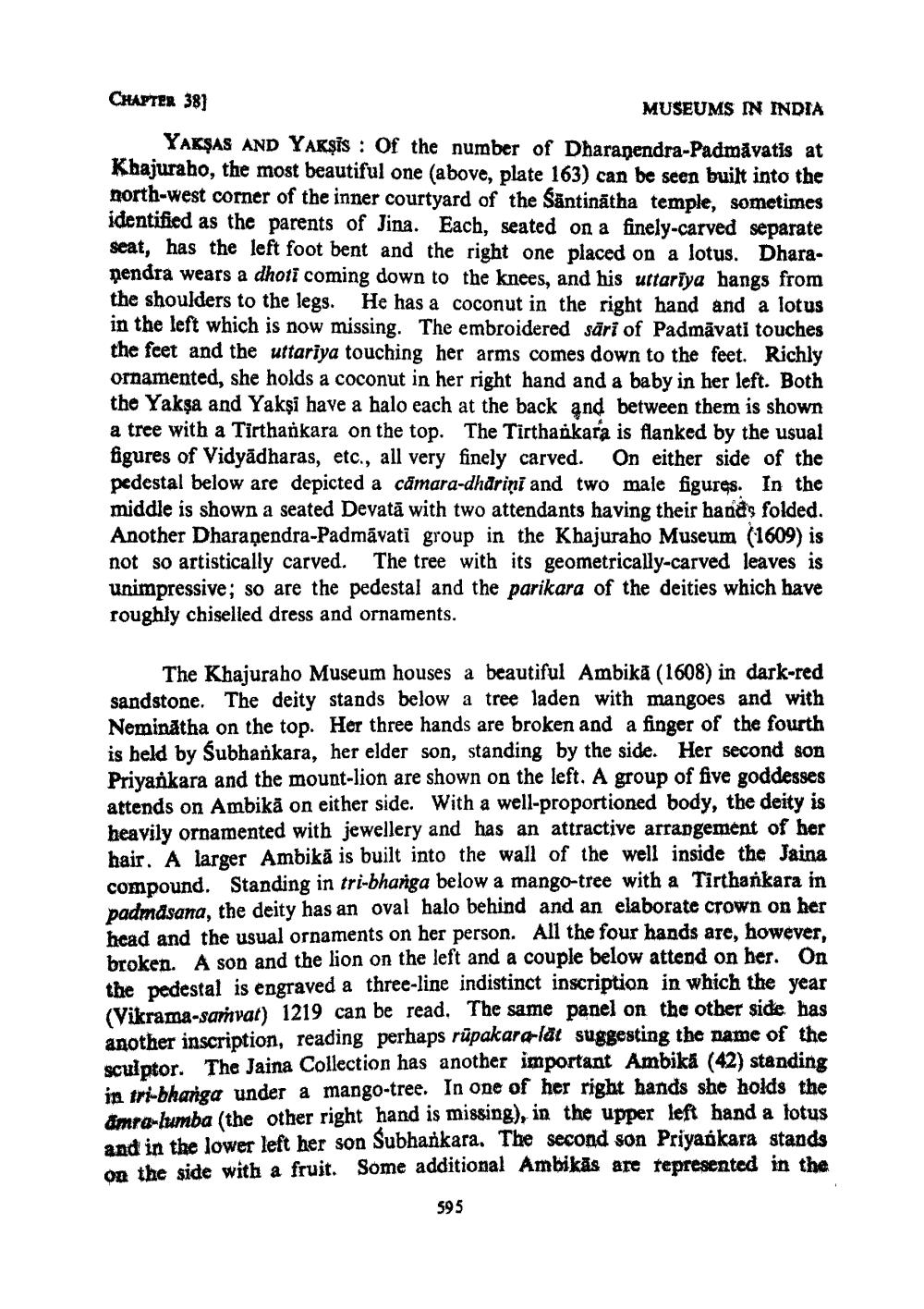________________
CHAPTER 38]
MUSEUMS IN INDIA
YAKŞAS AND YAKŞis : Of the number of Dharanendra-Padmavatis at Khajuraho, the most beautiful one (above, plate 163) can be seen built into the north-west corner of the inner courtyard of the Säntinātha temple, sometimes identified as the parents of Jina. Each, seated on a finely-carved separate seat, has the left foot bent and the right one placed on a lotus. Dharapendra wears a dhoti coming down to the knees, and his uttariya hangs from the shoulders to the legs. He has a coconut in the right hand and a lotus in the left which is now missing. The embroidered säri of Padmavati touches the feet and the uttariya touching her arms comes down to the feet. Richly ornamented, she holds a coconut in her right hand and a baby in her left. Both the Yaksa and Yaksi have a halo each at the back and between them is shown a tree with a Tirthankara on the top. The Tirthankara is flanked by the usual figures of Vidyādharas, etc., all very finely carved. On either side of the pedestal below are depicted a câmara-dharini and two male figures. In the middle is shown a seated Devată with two attendants having their hands folded. Another Dharanendra-Padmavati group in the Khajuraho Museum (1609) is not so artistically carved. The tree with its geometrically-carved leaves is unimpressive; so are the pedestal and the parikara of the deities which have roughly chiselled dress and ornaments.
The Khajuraho Museum houses a beautiful Ambika (1608) in dark-red sandstone. The deity stands below a tree laden with mangoes and with Neminatha on the top. Her three hands are broken and a finger of the fourth is held by Subhankara, her elder son, standing by the side. Her second son Priyankara and the mount-lion are shown on the left. A group of five goddesses attends on Ambikä on either side. With a well-proportioned body, the deity is heavily ornamented with jewellery and has an attractive arrangement of her hair. A larger Ambika is built into the wall of the well inside the Jaina compound. Standing in tri-bhanga below a mango-tree with a Tirthařkara in padmasana, the deity has an oval halo behind and an elaborate crown on her head and the usual ornaments on her person. All the four hands are, however. broken. A son and the lion on the left and a couple below attend on her. On the pedestal is engraved a three-line indistinct inscription in which the year (Vikrama-samvat) 1219 can be read. The same panel on the other side has another inscription, reading perhaps rūpakara-lat suggesting the name of the sculptor. The Jaina Collection has another important Ambika (42) standing in tri-bhanga under a mango-tree. In one of her right hands she holds the amra-lumba (the other right hand is missing), in the upper left hand a lotus and in the lower left her son Subhankara. The second son Priyaókara stands on the side with a fruit. Some additional Ambikās are represented in the
595




